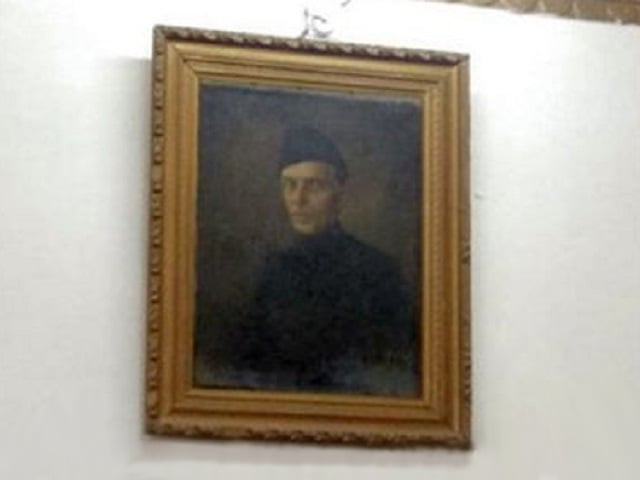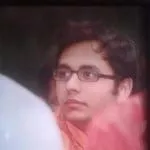AMU played a very important role in the history of the Pakistan movement, as many of its leaders and ideologues studied and mobilised there. When Jinnah died, he donated a third of his residuary estate to AMU, which is why through the portrait, the university was also honouring a generous benefactor and an important part of its history.
Previous governments of India did not hold this against the university, as it continued to get liberal funding and support from the central government. In fact, for 70 years, most Indians did not know such a portrait existed in the first place.
However, recently, Bharatiya Janata Party’s (BJP) Lok Sabha MP, Satish Gautam, wrote a letter to the vice chancellor of AMU, requesting the removal of the portrait, and for it to be replaced with that of India’s former president, APJ Abdul Kalam. The late former president remains the right wing’s go-to ‘good Muslim’. He was India’s missile man, played the Veena, and read the Bhagavad Gita, apart from seeking the blessings of prominent Hindu saints.
Almost at the other end of the spectrum stands Jinnah. BJP leaders like Jaswant Singh and LK Advani have gotten into trouble for taking a sympathetic view of him, in a way Congress leaders in India have not. The right wing in India therefore has a somewhat complicated relationship with Jinnah. A stated antipathy exists for sure, but there is also an oft expressed retrospective gratitude amongst many for the creation of Pakistan. Doing so rid India of most of its Muslim majority regions, allowing Hindus the space to breathe in a more comfortable majority.
Thus, Jinnah is the man who dissected the hallowed Akhand Bharat idea, but Jinnah is also the man who eventually obliged India’s Hindus. Bharat was therefore never about the people – it was about the land, and the history of the land that was taken away. For taking it away, Jinnah would officially be persona non grata. But unofficially, for helping strengthen the Hindu political identity by consolidating a Muslim political identity and then creating Pakistan (a constant source of succour and refrain for the political Hindu), he would be a godsend to many.
Finally, Jinnah is considered (solely) responsible for the Partition and Direct Action Day, and for the lives lost in those two painful episodes.
Therefore, the BJP’s attempt to take down the portrait can be seen as part of a series of events in which the Hindutva has attempted to assert itself more strongly, ever since Narendra Modi came to power. Muslims have been lynched; the body of one of the killers was wrapped in the tricolour with a union minister paying his respects; attempts have also been made to strengthen beef-related laws that disproportionately affect Muslims, while the alleged Hindu rapists of a Muslim girl have been defended. The communal situation in India has undeniably worsened. In this episode of assertion, men from the Rashtriya Swayamsevak Sangh (RSS) barged into the gates of AMU, demanding the portrait be removed. In the ensuing kerfuffle, students were injured.
However, this latest assertion has a special significance, because how many in India view Muslims continues to be influenced by Jinnah, the Partition and Pakistan. The narrative is that Muslims did not want to live together in a united country and have carved out their own space, then why should we continue to make space for them here, when they made their intentions clear in the past? Why should we make space for Jinnah’s portrait when he (and by extension most Muslims), by articulating the Two Nation Theory, wanted to maintain his (their) distance from us? This view continues to influence the interaction of many Hindus with Muslims in India today. Consequently, the Chief Minister of Uttar Pradesh has said the portrait must go.
In his book Homo Deus, Yuval Noah Harari says,
“Historians study the past not in order to repeat it, but in order to be liberated from it.”
He goes on to say,
“The cold hand of the past emerges from the grave of our ancestors, grips us by the neck and directs our gaze towards a single future. We have felt that angry grip from the moment we were born, so we assume it is a natural and inescapable part of who we are. Therefore we seldom try to shake ourselves free, and envision alternative futures. Studying history aims to loosen the grip of the past.”
This could be particularly appropriate in the India-Pakistan context, and in the manner with which so many in the two countries view their minorities through the prisms of the other. Hindus and Muslims in Pakistan and India continue to struggle to find acceptance as equals in their countries. We have inherited the identities and prejudices of our ancestors and they have a firm, angry grip on us. In reviewing the different narratives of our history, rather than simply internalising what the respective states or our folks tell us, it is possible to appreciate that the history of the Partition is not so straightforward as to blame the deep fissures created then on Jinnah alone.
If we are able to meaningfully re-examine the past, more of such complexities will emerge, and these complexities may help put into perspective some of the simple notions that give rise to our prejudices. We may come to the conclusion that Jinnah was one among many flawed Indian leaders who was once referred to as the best ambassador of Hindu-Muslim unity by Gokhale. That Jinnah raised his voice against British rule, spoke up for Bhagat Singh, left his mark as a brilliant lawyer on India’s constitutional history, and, along with his peers Gandhi and Nehru, made his share of mistakes.
By allowing the product of the errors of our leaders of the past to define us today, and allow that to limit our horizons for tomorrow, would be a travesty. Allowing the portrait to remain would represent that we are no longer prisoners of the identities shaped by prejudices of the past. That we have moved on, and we remember Jinnah in the fullness of his personality, warts and all.
Removing the portrait would reflect an insecure, narrow nationalism that lashes out at a forgotten 70-year-old portrait. If we can better appreciate the past, it can fundamentally improve relations between Muslims and Hindus not just across the border, but within India too. It could give Indian Muslims space to navigate their own identities in modern India – somewhere between a Kalam and a Jinnah. A space they have had for the last 70 years, and should continue to have in the future as well.
Let the portrait be.



COMMENTS
Comments are moderated and generally will be posted if they are on-topic and not abusive.
For more information, please see our Comments FAQ